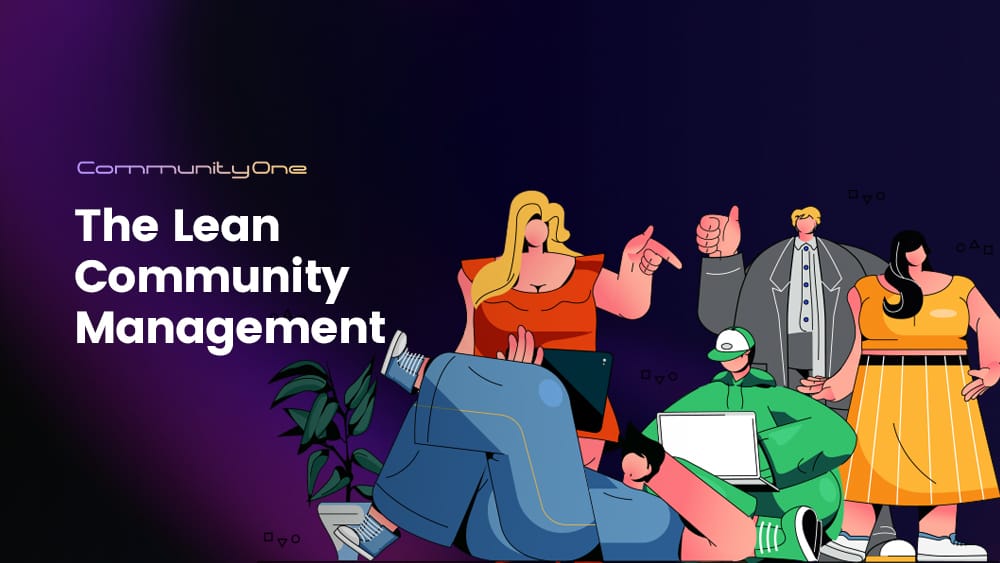The Lean Community Management

With Web3, the concept of community management has taken a new turn. It's no longer about just managing a group of people online but nurturing a community that supports a product, a cause, or a movement. However, maintaining a balance between spending too much time/money and too little money/time on community management can be challenging. This post will guide you through the concept of Lean Community Management, a strategy that optimizes resources and ensures sustainable growth.
In this post, you will learn about the different aspects of lean community management, its principles, and how it can benefit your project. We will discuss the extremes of community management, how to manage your community efficiently without exhausting resources, and how to ensure sustainable growth.
The Extremes of Community Management
Let's begin by exploring the two extremes of community management. One extreme sees businesses spending huge amounts of money over a short period, hiring an external team, and creating hype around their product or service. This approach has a high budget and is extremely intense, but it is not sustainable in the long run.
Here is what Hype on Discord looks like
The other extreme is the one-man show - managing the community as and when needed with no specific strategy. This approach has a long time length, zero budget, and no pressure. It is typically seen in volunteer-driven communities that lack monetization methods.
What is Lean Community Management?
Lean community management is a middle ground between these two extremes. It is a strategy that focuses on sustainability, efficiency, and growth. Here are the key components of lean community management:
- Commercial Intent and Goal: The community exists to support a product or a cause, which in turn generates revenue. A portion of this revenue is then reinvested into the community.
- Internal Team Driven: The community is built and managed by an internal team. The core teams are hands-on, and they respond quickly to community queries and concerns, at least during the initial stages.
- Top Funnel Growth: Systematic marketing is implemented to ensure growth. Growth channels can be Twitter, YouTube, Discord listing ads, IRL events, collaborations with other projects, etc. Having sustainable marketing channels means your projects will be forever green. There are always new members to entertain and serve!
- Scaling: Only when the community-market fit is found, scaling is done by hiring an external team.
- Management and Monetization: Continuous management of the community is done to shape the right Return on Investment.
Given many of your reads are during the early stage of building, we will continue to focus on step 1 to 4.
Principles of Lean Community Management
The principles behind lean community management are rooted in patience, authenticity, commercial intent, and a balance between time and money. Here's a closer look at these principles:
- Patience: Building a community takes time. Some communities with huge budgets may be able to build up quickly, but the members are likely to leave if they see no monetary gain. In our internal research, it takes about 6 months to build a community with a solid foundation.
Success projects have a lot more messages during early stages
- Authenticity: The original team plays a crucial role in community management. Members appreciate hearing from the founders and being part of the startup journey.
- Commercial Intent: The community should always play a role in your business outcome. For instance, if you are pre-mint, the goal is to mint out; if you are pre-product, the goal should be to maximize beta launch sign up rate, etc.
- Balance between Time and Money: Building a community organically with a minimal budget is possible, but it is faster with a bit of investment. The trade-off is always between time and money.
More reads from our blogs:
The startup guide to building a Discord
How Poglin got their first 10k Discord members
Next Steps
Now that you understand the basics of lean community management, it's time to learn how to actually set up a Discord.
